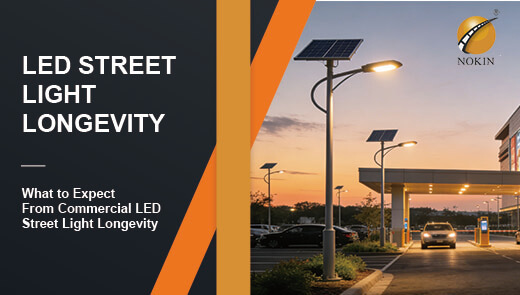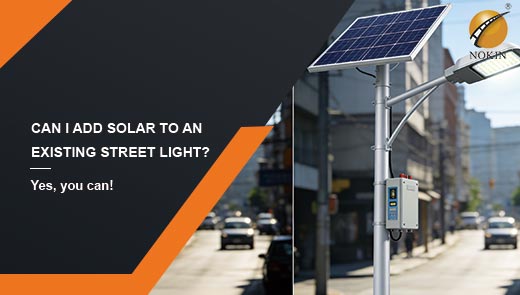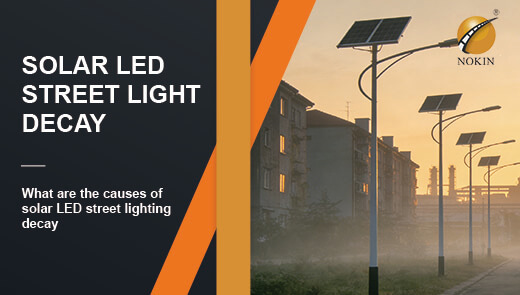The Evolution of Solar Flood lights: How They Have Changed Over Time
In the global energy transition, solar Flood lights have emerged as a revolutionary force in outdoor lighting due to their green and low-carbon characteristics. From early inefficient prototypes to today's intelligent products, their evolution not only reflects breakthroughs in photovoltaic technology but also mirrors humanity's relentless pursuit of sustainable development. This article systematically reviews the technological iterations, application expansions, and future trends of solar Flood lights, revealing how this green lighting solution has evolved from merely meeting lighting needs to a diversified value system integrating energy conservation, intelligence, and ecological protection. This transformation is underpinned by the synergistic progress of materials science, optical design, and energy technology.

Understanding Solar Flood lights
The Basic Concept of Solar Flood lights
Solar Flood lights are essentially a self-sustaining energy system that operates independently through a closed-loop conversion process of “solar energy - electrical energy - solar energy”: during the day, solar panels convert solar energy into electrical energy and store it in batteries; at night, the batteries power LED light bulbs to emit light. This model completely eliminates reliance on traditional power grids, making it particularly suitable for remote areas, scenic trails, and residential courtyards. Installation requires no complex wiring, providing a flexible solution for outdoor lighting.
Key Components of Solar Lights Flood lights
Solar panels, as the core energy-harvesting components, have evolved from early polycrystalline silicon materials with efficiency rates of just 10-15% to monocrystalline silicon and thin-film materials with efficiency rates exceeding 25%. The improvement in energy conversion efficiency directly reduces charging time and extends battery life. The innovation in LED light sources is even more significant, with energy consumption reduced by 80% compared to traditional incandescent bulbs, with a lifespan extended to over 50,000 hours. The improved luminous efficiency and stability have transformed them from auxiliary lighting to primary light sources.
Energy storage batteries have evolved from nickel-metal hydride batteries to lithium-ion batteries, with energy density increased by threefold. They can operate normally at temperatures as low as -20°C, addressing the earlier product's limitations in cold regions. The integration of smart control units enables an energy-saving mode where “lights turn on when people arrive and turn off when they leave,” achieved through the coordinated operation of light sensors, motion sensors, and timers, driving the product's transition from “basic lighting” to “smart energy management.”
The Early Stages of Solar Lights Flood lights
Technical Limitations of the First-Generation Products
At the beginning of the 21st century, solar Flood lights were limited by technological constraints and had significant drawbacks: solar panels made of polycrystalline silicon had a light conversion efficiency of only 10-15%, requiring them to be exposed to standard sunlight for over 8 hours to fully charge. In cloudy weather, charging efficiency dropped by 50%. The brightness of a single light typically did not exceed 200 lumens (equivalent to a 15W incandescent bulb), barely illuminating a path within 3 meters, and thus unable to meet the requirements of scenarios such as courtyard security or commercial lighting. The lead-acid batteries used in the energy storage system have low energy density (approximately 50 Wh/kg), can only sustain lighting for 1-2 nights during continuous rainy weather, and experience over 60% capacity degradation at -10°C, rendering them unusable in northern regions during winter.
Additionally, a 10W solar panel requires an area of 0.5 square meters, and the bulky aluminum alloy frame is difficult to adapt to small installation scenarios such as garden railings. In southern regions with heavy rainfall, due to inadequate waterproofing, the lamp body often experiences short circuits caused by condensation, resulting in an average failure interval time (MTBF) of less than 300 hours.

The Dual Dilemma of Market Promotion
Technical flaws directly led to low market acceptance: initially, the cost of a single solar floodlight was 3-5 times that of a traditional electric light, yet its brightness was below 200 lumens, and it could not last more than two nights during continuous rainy weather, with stability significantly lower than grid-powered equipment. The imbalance in cost-effectiveness led consumers to generally opt for traditional lighting.
At the time, market research indicated that over 70% of users deemed solar lights “insufficiently bright” and “unreliable in rainy weather.” The industry fell into a vicious cycle of “technical bottlenecks - market indifference”: due to low sales, companies struggled to invest in technological upgrades, and over 60% of products prior to 2010 still utilized polycrystalline silicon panels and lead-acid batteries with efficiency rates below 15%. Despite their environmental appeal, practical drawbacks such as performance degradation below -10°C and an annual light decay rate exceeding 10% limited penetration rates in commercial and municipal applications to less than 8% for an extended period. This dual lag in technology and market adoption severely constrained early industry expansion.
The Modern Era of Solar Flood lights
Breakthroughs in Core Technology
Over the past decade, technological innovations in solar Flood lights have experienced explosive growth. In the photovoltaic materials sector, monocrystalline silicon panels have achieved an efficiency of 24.5% through passivation layer technology (PERC), increasing power generation by 40% under the same lighting conditions. For example, a 20W light now charges in 4.8 hours, down from 8 hours in earlier models. Optical design has incorporated Fresnel lenses and secondary optical distribution technology. The former uses a sawtooth prism structure to converge diffused light into parallel beams, while the latter employs reflective cups to precisely control light distribution, improving light efficiency utilization from 60% to 85% and reducing glare values (UGR) to below 19. Test results for a certain brand's 2023 model show that under 1000 lux illumination, a 20W solar floodlight can output 2200 lumens, equivalent to the brightness of a traditional 60W incandescent lamp, with an annual lumen depreciation rate below 3%.
Diversification of Application Scenarios
Technological advancements are driving the transformation of solar Flood lights from “functional lighting” to “scenario-customized lighting.” In the home security sector, courtyard lights with human infrared sensing and 30-meter long-range detection capabilities have been introduced, enhancing safety while reducing energy consumption. In commercial landscape scenarios, solutions for illuminating ancient buildings have been developed with adjustable color temperature (2700K-6500K) and IP67 waterproof ratings, balancing lighting functionality with cultural landscape preservation; in the industrial sector, modular multi-light parallel power supply systems have been designed for construction sites and mining areas, meeting the high reliability requirements of temporary lighting. As prices decline, solar Flood lights are achieving large-scale application in more fields such as municipal engineering and agricultural parks.

The Future of Solar Flood lights
Technological Innovations Driving Efficiency
The future innovations in solar Flood lights will focus on three key technological directions: Perovskite solar panels, with a laboratory conversion efficiency of 32% and flexible, bendable properties, are transitioning from laboratory research to mass production. Their ultra-thin substrates can be directly applied to curved building facades or foldable tents, with commercial-scale production expected by 2025, reducing costs by 40% compared to traditional silicon substrates. Solid-state battery technology has broken through the 400Wh/kg energy density barrier. By adopting sulfide electrolytes, it maintains over 90% discharge efficiency across a wide temperature range from -40°C to 60°C, with a cycle life exceeding 5,000 cycles (compared to approximately 1,000 cycles for traditional lithium batteries), while completely eliminating the risk of electrolyte leakage.
The AI adaptive system integrates meteorological satellite data and edge computing modules to predict light intensity over the next 72 hours using an LSTM neural network. When continuous rain is forecasted, it automatically increases daytime charging power by 30% and dynamically adjusts nighttime lighting strategies (e.g., reducing brightness to 50% during off-peak hours) to ensure continuous operation for seven days under extreme weather conditions.
The Limitless Potential of Cross-Industry Applications
In agricultural settings, future solar Flood lights will be designed to simulate the specific light spectra of red light at 660nm and blue light at 450nm, tailored to plant growth requirements. By precisely regulating light exposure, these lights will enhance photosynthesis and improve planting efficiency in greenhouse facilities. In the smart city sector, the product will integrate 5G micro-base stations and environmental sensors, enabling a single light to simultaneously provide lighting, WiFi coverage, air quality monitoring, and more, becoming a foundational node in the urban IoT network. For extreme environments such as Antarctic research stations and desert highways, IP68+ rated salt fog resistance and sandstorm-proof design will become standard features, driving the expansion of solar lighting applications under harsh conditions and elevating it from an “outdoor lighting tool” to an “energy infrastructure.”

The Overall Impact of Solar Floodlight Evolution
Ecological Benefits of Solar Flood lights
The widespread adoption of solar Flood lights brings significant ecological benefits: a single 20W solar floodlight can reduce CO₂ emissions by approximately 18kg annually, equivalent to the carbon sequestration capacity of planting 10 trees. If traditionally lighting is replaced on a large scale, this will provide strong support for achieving carbon neutrality goals. In terms of light pollution control, precise light control design through optical lenses reduces stray light by 70% compared to traditional Flood lights, effectively protecting bird migration routes and the breeding environment of nocturnal insects, maintaining the natural rhythms of ecosystems, and achieving a balance between “lighting needs” and “ecological protection.”
The Value of Technological Evolution from the Perspective of Economic Development
From a lifecycle cost perspective, 2023 data shows that solar Flood lights are already 35% cheaper than traditional electric lights, achieving a cost inversion in “purchase + maintenance,” with economic advantages driving rapid market expansion. The global solar lighting market has an annual compound growth rate of 19.2%, with an expected market size exceeding 12 billion USD by 2028 (IEA data). The massive market demand has driven innovation across the entire supply chain, from photovoltaic materials and LED light sources to smart control systems, promoting the deep penetration of green energy technology in the lighting sector and forming a virtuous cycle of “ecological benefits - technological progress - cost reduction - market expansion.”
Looking back at the evolution of solar Flood lights, their essence lies in humanity's exploration of “unlimited energy.” From early inefficient products mimicking traditional lighting to today's industry benchmarks leading smart low-carbon lighting, their technological leap has not only transformed “how to illuminate the night” but also redefined the “symbiotic relationship between energy and the environment.” With the implementation of technologies such as perovskite photovoltaics and AI intelligent control, future solar Flood lights will no longer be merely lighting tools but may become intelligent nodes integrating energy production, data transmission, and ecological monitoring. This will transform “zero-carbon lighting” from a concept into the infrastructure of daily life, driving humanity toward sustainable development goals and enabling a role transition from “technology follower” to “rule-setter” in the outdoor lighting sector.




